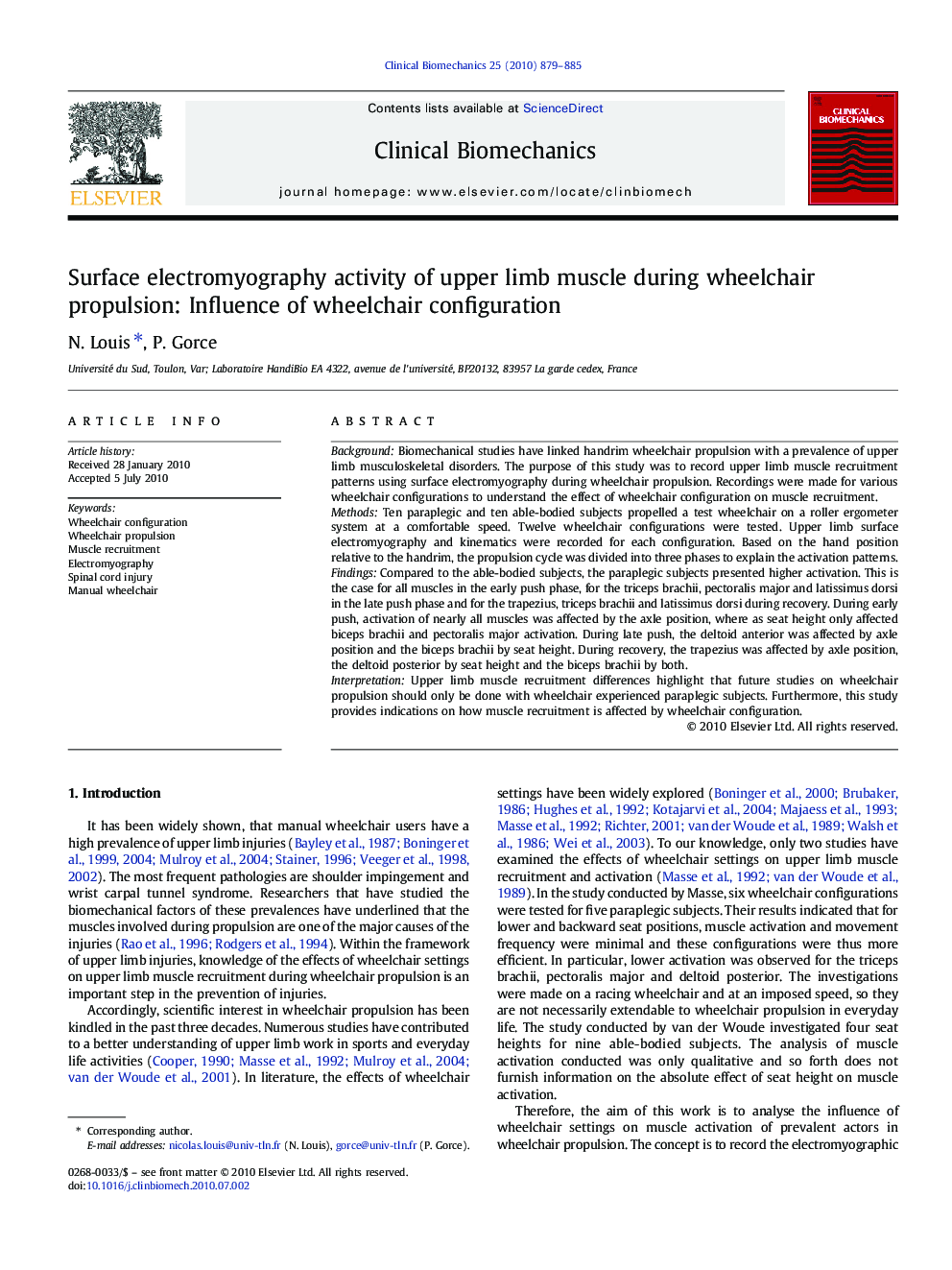| Article ID | Journal | Published Year | Pages | File Type |
|---|---|---|---|---|
| 4050982 | Clinical Biomechanics | 2010 | 7 Pages |
BackgroundBiomechanical studies have linked handrim wheelchair propulsion with a prevalence of upper limb musculoskeletal disorders. The purpose of this study was to record upper limb muscle recruitment patterns using surface electromyography during wheelchair propulsion. Recordings were made for various wheelchair configurations to understand the effect of wheelchair configuration on muscle recruitment.MethodsTen paraplegic and ten able-bodied subjects propelled a test wheelchair on a roller ergometer system at a comfortable speed. Twelve wheelchair configurations were tested. Upper limb surface electromyography and kinematics were recorded for each configuration. Based on the hand position relative to the handrim, the propulsion cycle was divided into three phases to explain the activation patterns.FindingsCompared to the able-bodied subjects, the paraplegic subjects presented higher activation. This is the case for all muscles in the early push phase, for the triceps brachii, pectoralis major and latissimus dorsi in the late push phase and for the trapezius, triceps brachii and latissimus dorsi during recovery. During early push, activation of nearly all muscles was affected by the axle position, where as seat height only affected biceps brachii and pectoralis major activation. During late push, the deltoid anterior was affected by axle position and the biceps brachii by seat height. During recovery, the trapezius was affected by axle position, the deltoid posterior by seat height and the biceps brachii by both.InterpretationUpper limb muscle recruitment differences highlight that future studies on wheelchair propulsion should only be done with wheelchair experienced paraplegic subjects. Furthermore, this study provides indications on how muscle recruitment is affected by wheelchair configuration.
